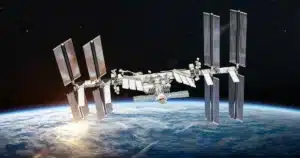In the vast expanse of our universe, the International Space Station (ISS) has stood as a symbol of human ingenuity and collaboration for over two decades. However, recent rumblings within the halls of NASA suggest a radical proposal – paying a staggering $1 billion to destroy the very structure that has been a beacon of scientific exploration in Low Earth Orbit (LEO). Let’s delve into the intricacies of this audacious proposition and understand the rationale behind NASA’s contemplation.
I.Introduction
The ISS has been a cornerstone for scientific experiments, technological innovation, and international collaboration, serving as a microgravity laboratory.Despite its achievements, the ISS grapples with technical challenges and an aging infrastructure, demanding hefty financial investments for maintenance.The cost of sustaining the ISS raises pertinent questions about the viability of continuing its operations, prompting NASA to reconsider its priorities.
III. NASA’s Dilemma
NASA envisions pushing the boundaries of space exploration, and redirecting resources from ISS maintenance could fund ambitious missions beyond LEO.The eye-watering proposal involves allocating $1 billion for a carefully orchestrated destruction plan, which includes deorbiting the various modules of the ISS.NASA has explored alternatives, such as extending the ISS’s operational life, but the exorbitant costs associated with continual maintenance are driving the agency towards the option of controlled deorbit.The mere suggestion of dismantling the ISS has sparked intense debates, with scientists, policymakers, and the general public expressing diverse opinions on the matter.
IV.Scientific and Technological Advancements

The ISS has been a testing ground for cutting-edge technologies, contributing to breakthroughs in robotics, materials science, and medicine that benefit life on Earth and propel space exploration.The proposed redirection of funds could lead to accelerated developments in propulsion systems, artificial intelligence, and sustainable life support systems, paving the way for the next era of space exploration.However, the scientific community is not unanimous in its support, raising concerns about the potential loss of valuable research opportunities and the need for careful consideration of the consequences.
V.Environmental and Ethical Considerations
Thecontrolled destruction of the ISS raises environmental concerns, particularly regarding space debris and its potential impact on future missions and satellite operations.The ethical implications of deliberately dismantling a structure representing global collaboration and scientific progress are profound, sparking ethical debates within and outside the scientific community.
VI.Risk to International Collaboration:
-
-
- Misconception: Believing that the proposal reflects a breakdown in international cooperation.
- Clarification: The ISS represents one of the most successful examples of international collaboration in space exploration. Any decision about the ISS’s future would likely involve diplomatic efforts to maintain positive relationships between participating nations and to ensure continued collaboration in future space endeavors.
-
- Environmental Concerns Ignored:
-
-
- Misconception: Assuming that the proposal ignores environmental impacts.
- Clarification: Space agencies are typically mindful of environmental concerns, especially when planning the disposal of space assets. Any proposal for the ISS’s destruction would likely include plans for a controlled deorbit and re-entry to minimize the environmental impact and prevent space debris.
-
- Lack of Scientific Value:
-
-
- Misconception: Thinking that the proposal implies a dismissal of the scientific contributions of the ISS.
- Clarification: The ISS has been a vital platform for scientific research, providing insights into various fields such as biology, physics, and materials science. Proposals regarding its future would likely consider the scientific value and potential benefits of continued operations or transition to new projects.
- Unilateral Financial Burden:
- Misconception: Assuming that the financial burden falls solely on the United States or a single participating nation.
- Clarification: The financial responsibility for the ISS is shared among its partner nations. Any decision about the ISS’s future would involve discussions on financial commitments and burden-sharing to ensure an equitable arrangement among the collaborating countries.
- Lack of Public Input:
-
-
- Misconception: Believing that the proposal disregards public opinions and concerns.
- Clarification: Decisions related to major space projects, including the ISS, often involve public engagement and scrutiny. Proposals and decisions would ideally consider the perspectives of the public, scientists, and other stakeholders to ensure transparency and accountability.
It’s important to note that these points are general considerations, and the specifics of any proposal would depend on the actual circumstances and decisions made by the relevant space agencies. For the latest and most accurate information, it’s recommended to refer to official statements and updates from the involved space agencies and organizations.The decision to destroy the ISS has far-reaching diplomatic consequences, impacting NASA’s international collaborations and potentially straining relationships with partner countries.
VII. Future of Space Exploration
In the wake of the proposed destruction, NASA envisions a strategic shift towards more ambitious projects, including lunar exploration, Mars missions, and collaborations with private space companies.Partnerships with private enterprises are integral to NASA’s future plans, with an emphasis on leveraging the capabilities of commercial space entities for mutually beneficial objectives.NASA’s vision extends beyond the ISS, envisioning a future where human presence extends to distant celestial bodies, marking a new chapter in the annals of space exploration.
Conclusion
The potential consideration by NASA to allocate $1 billion for the decommissioning of the International Space Station signifies a pivotal moment in the future of this collaborative space endeavor, prompting further discussions and inquiries into the rationale behind such a decision. The implications and outcomes of this deliberation will undoubtedly shape the trajectory of space exploration and international cooperation in the years to come.
Read more:Attend the International Conference